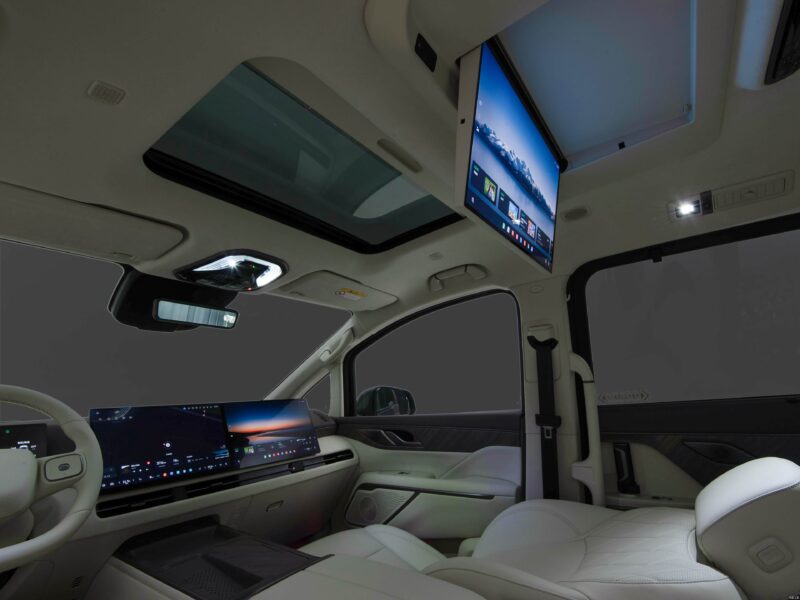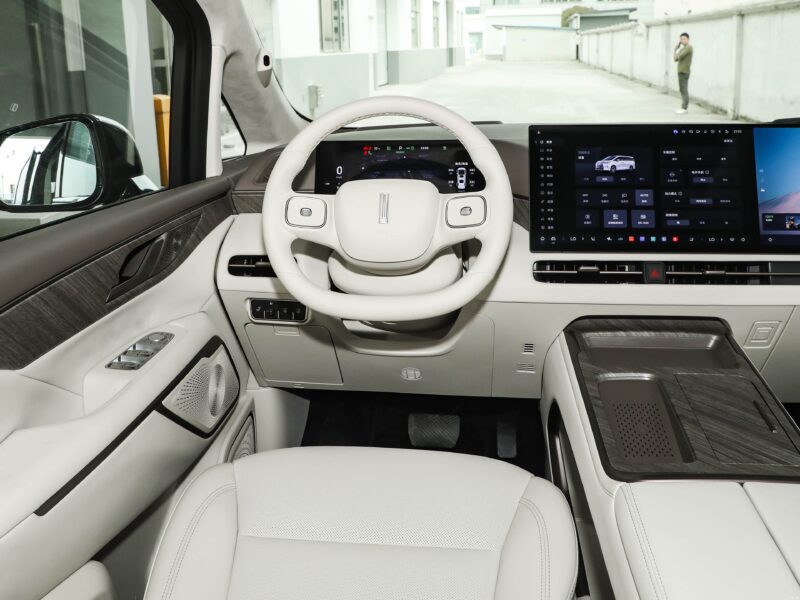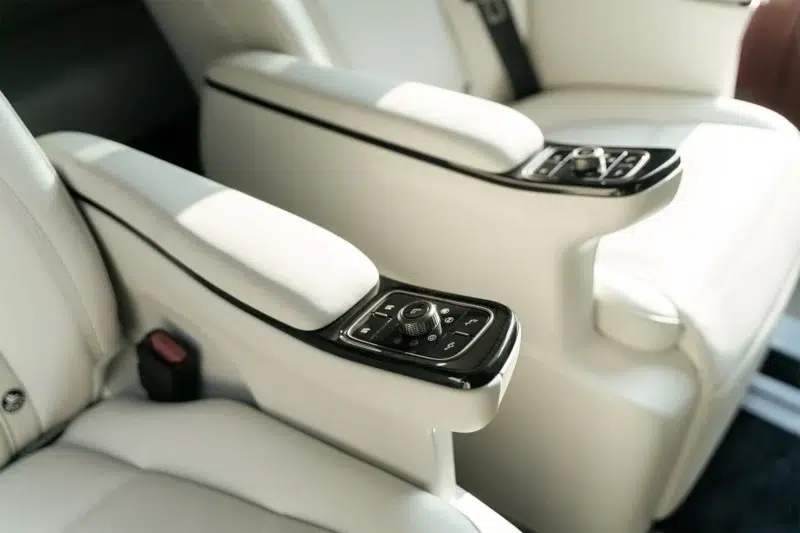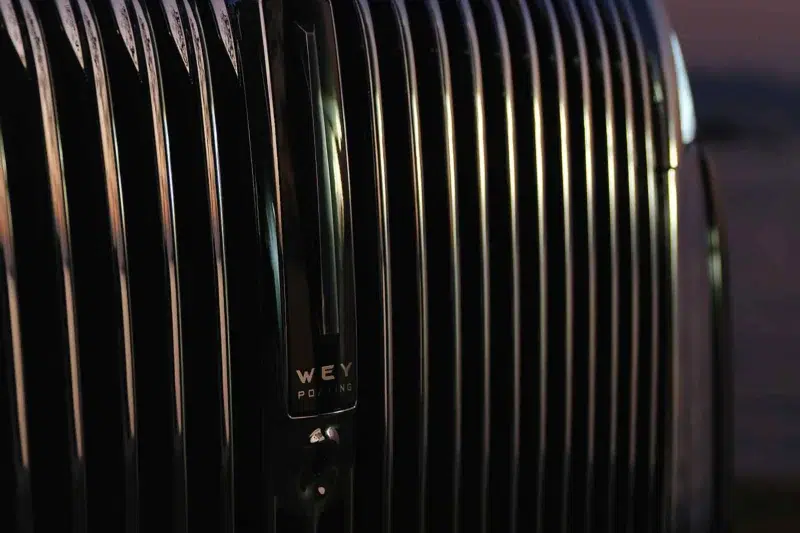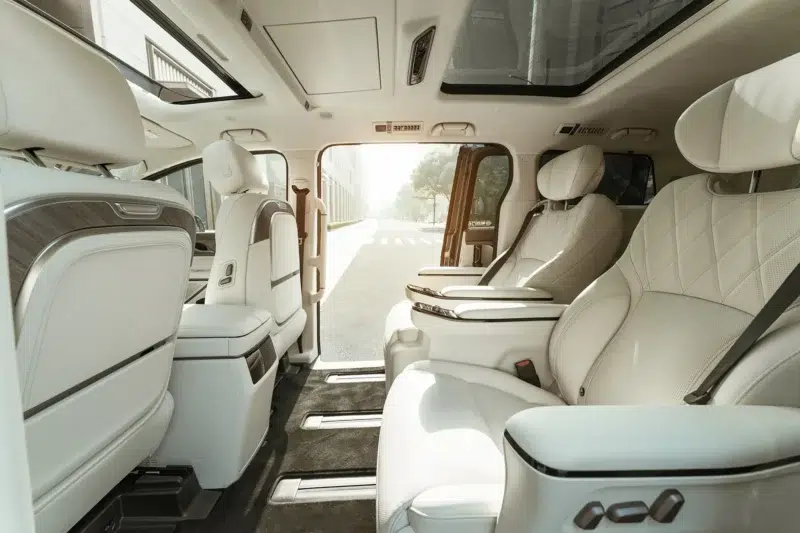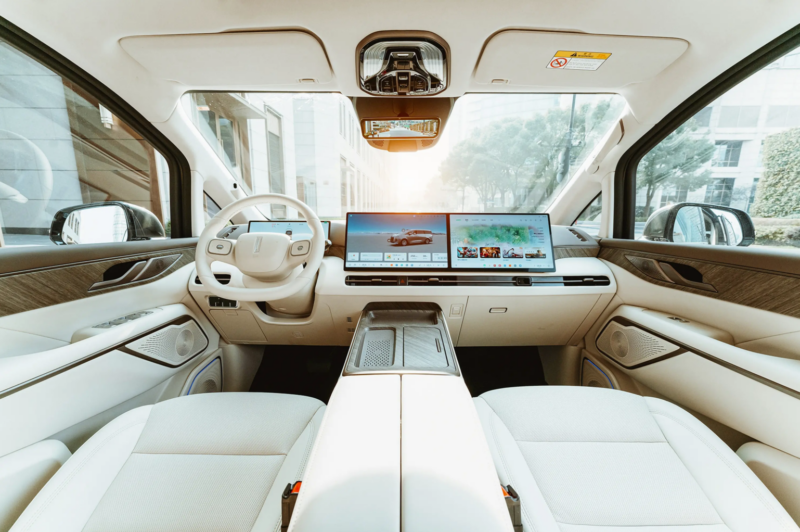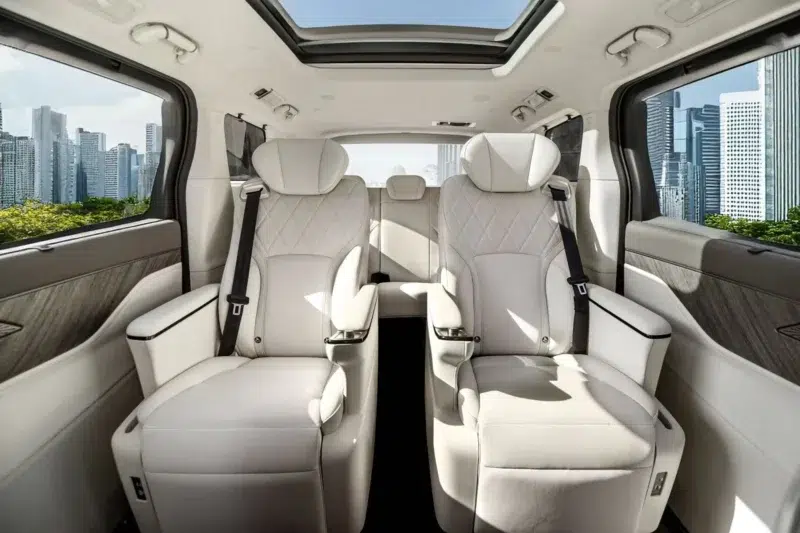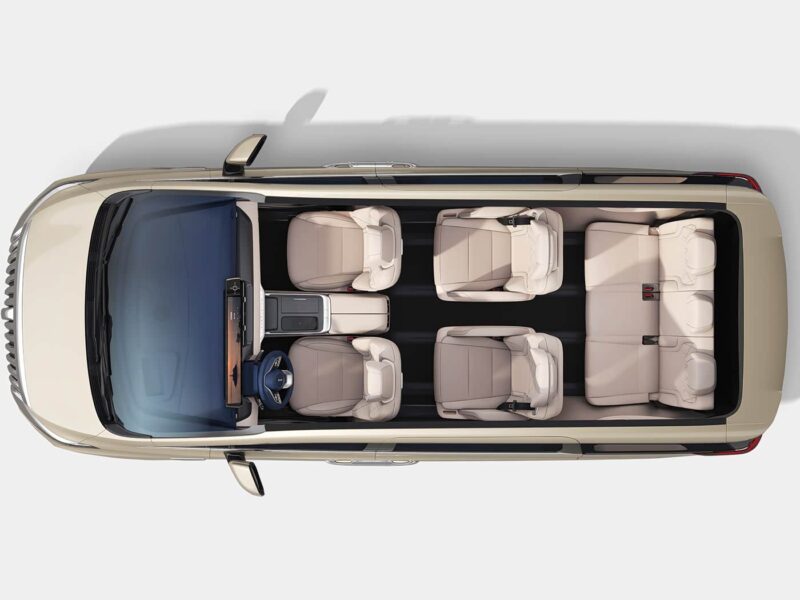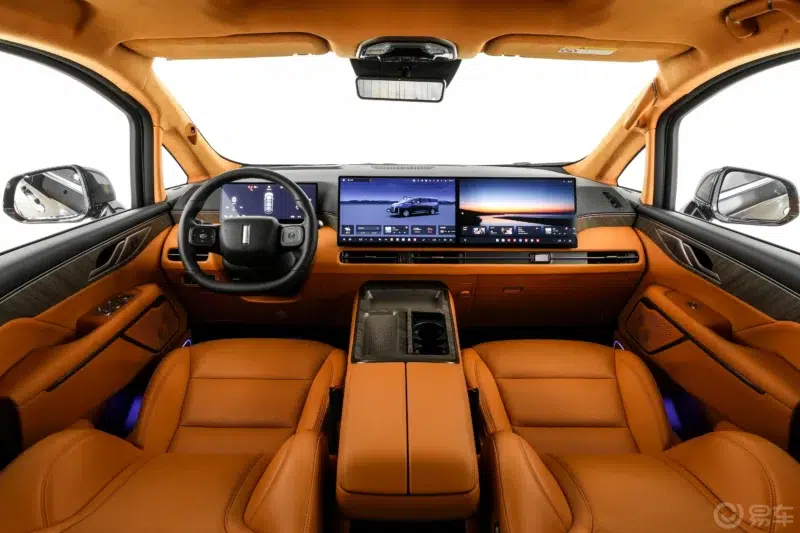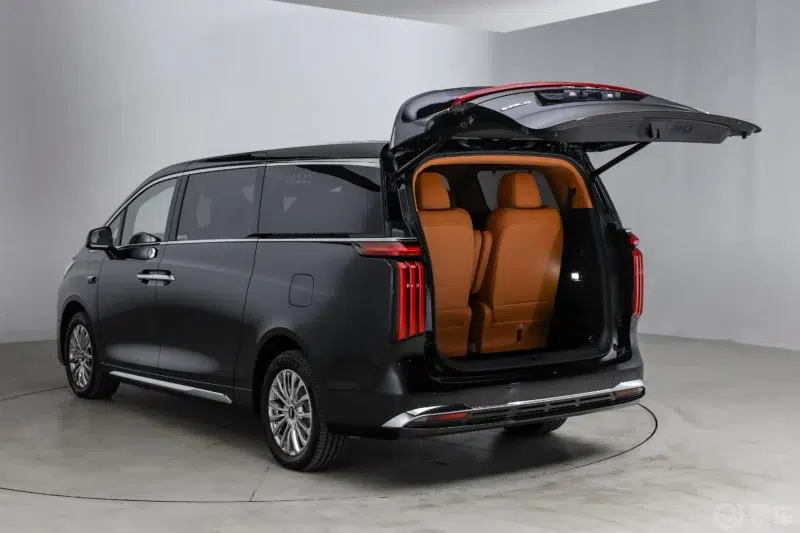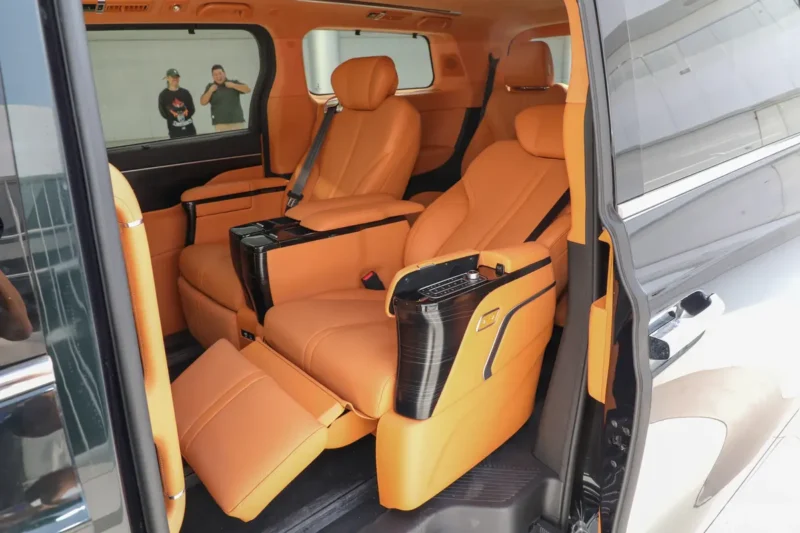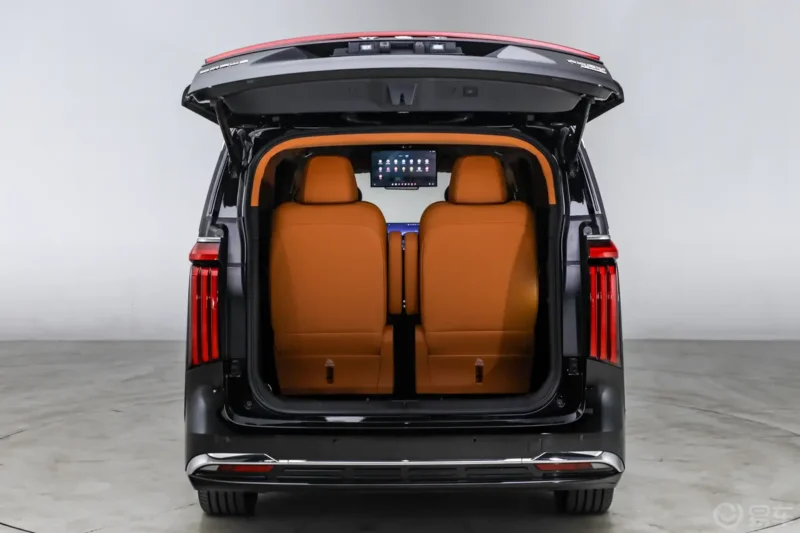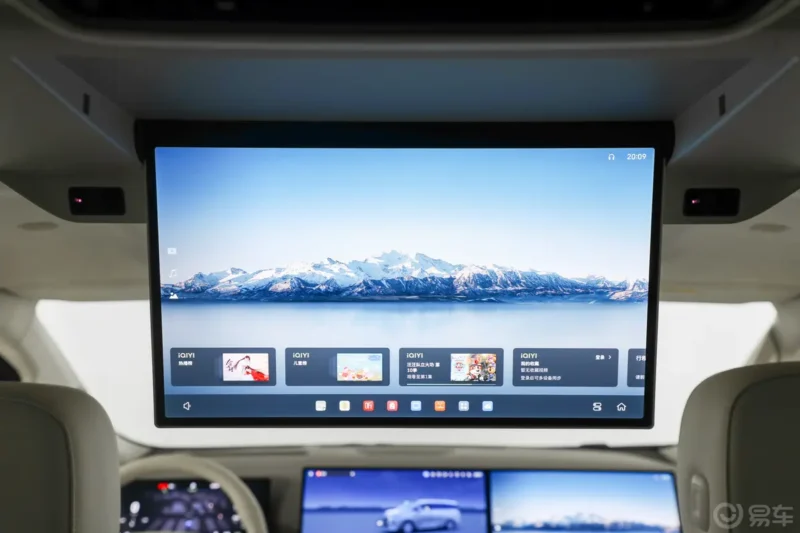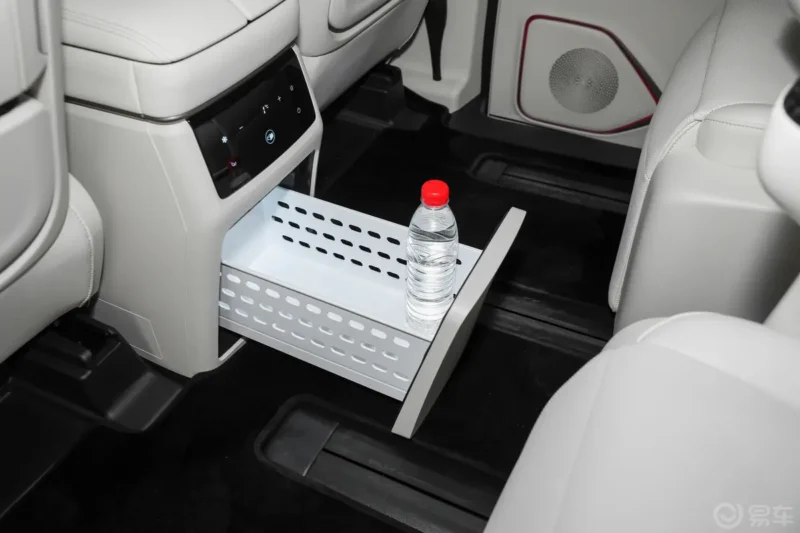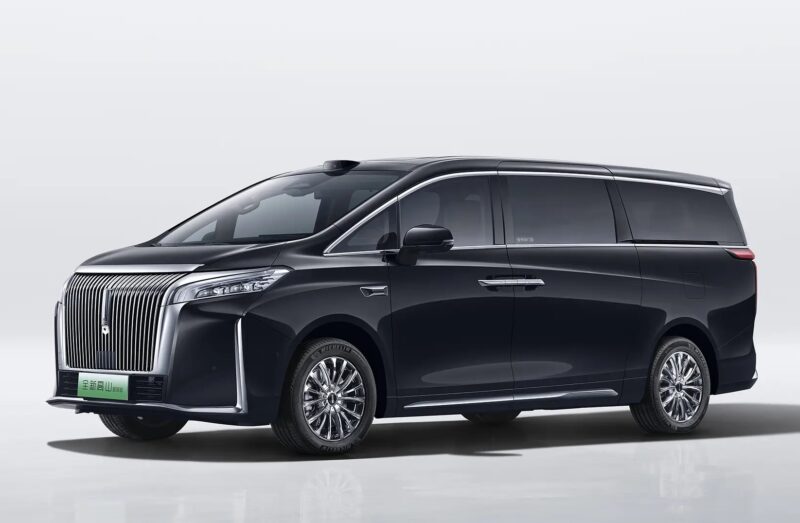EXLUSIVE Faraday Future’s new minivan is updated Wey Gaoshan 9 from GWM, to be assembled as SKD to avoid US tariffs
Faraday Future launched the FX Super One electric minivan in Los Angeles on Thursday. Overseas media noted that the new EV bears a resemblance to the Wey Gaoshan from Great Wall Motor, one of China’s largest private auto manufacturers.
CarNewsChina sources close to the Chinese automaker have now confirmed that Faraday Future is sourcing the EV from GWM, and both parties discussed how to avoid EV tariffs when importing the EV into the US.
“Yes, it’s the Wey Gaoshan 9. GWM have been engaged with them (Faraday Future) about this project for roughly a year. They explored the possibility of rebadging the model and requested additional modifications. However, they were unable to meet the MOQ (minimum order quantity) required to justify the investment in new tooling or production line changes,” said a source, which want to remain anonymous due to connection with the company, to CarNewsChina.
Wey is a high-end EV brand under GWM. The Wey Gaoshan (高山 in Chinese) is an MPV series launched in February 2023, known overseas as Wey 80. In May 2025, the updated version was launched in China. It sells relatively well, with 5,949 units delivered in June, according to data monitored by China EV DataTracker.
The 2025 Gaoshan series currently has two options on the market: Gaoshan 8 and Gaoshan 9. The Gaoshan 8 is an entry-level, smaller variant, while the Gaoshan 9 is a slightly larger and more expensive model.
CarNewsChina compared the interior of the Wey Gaoshan with the official pictures shared by Faraday Future, and the interior is the same, with only the logos changed. The EV features the same wheel with a flat bottom, two panoramic roofs, buttons on the seats, the same central tunnel, and three LCD screens positioned in front of the driver and passenger, as well as a pop-up screen for the passenger in the second row. The chairs and even the small decorative elements, such as those on the gear handles, are identical.
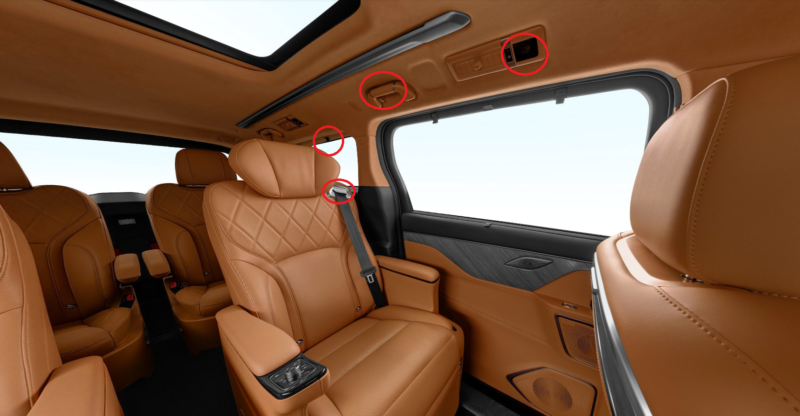
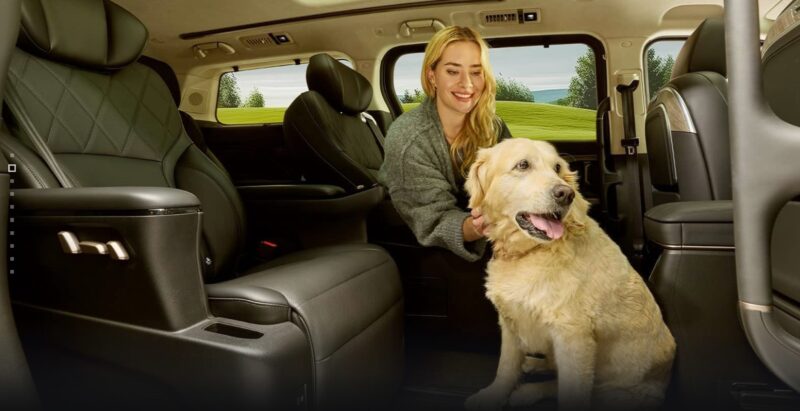

Faraday Future didn’t release many specifications about the FX Super One, but a few of them included a 130-inch wheelbase, which is approximately 3,302 mm, and a trunk space of 320 litres. The company also announced all-electric and plug-in hybrid powertrain options, as well as 4-, 6-, and 7-seat options.
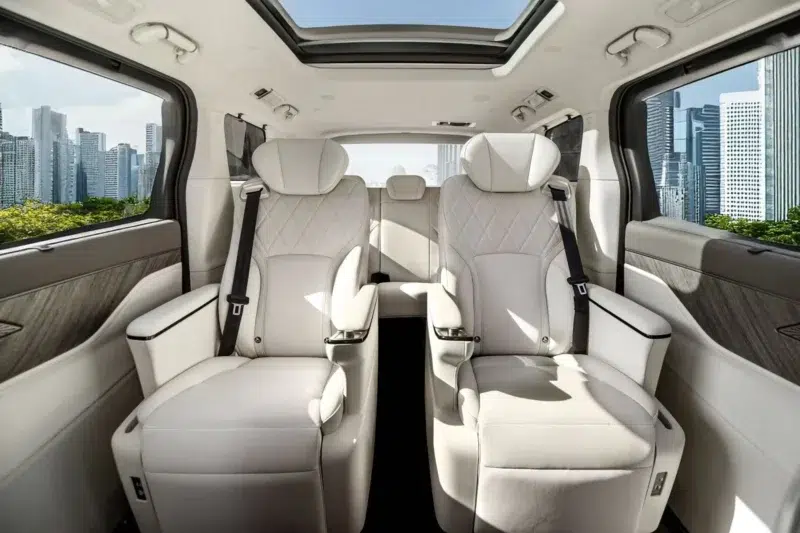
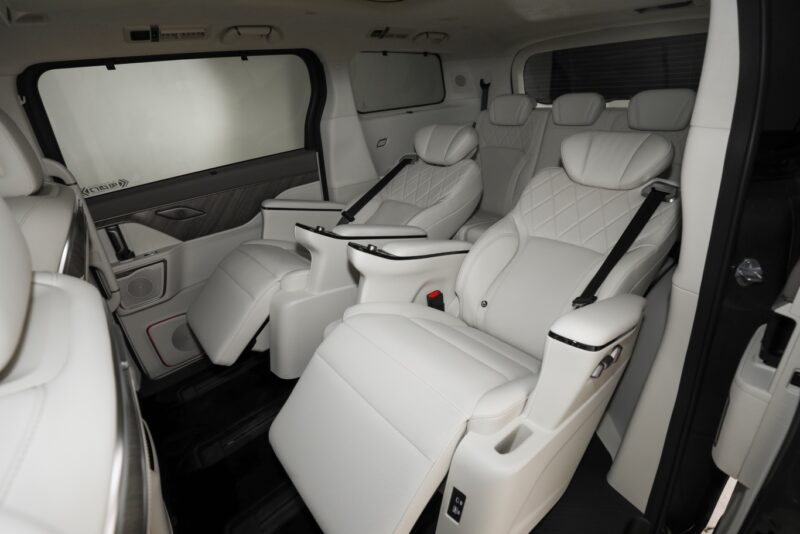
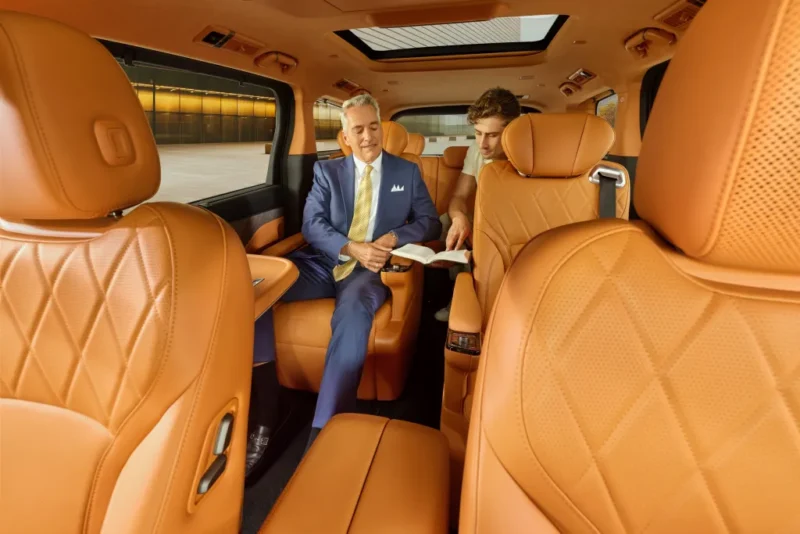
The Wey Gaoshan 9 features a 3,275 mm wheelbase (128.1 inches) and 315 litres of trunk space, which expands to 1,975 litres with the folded third row of seats.
Looking at Wey Gaoshan 9 core specs, it measures 5410/1960/1890 mm (length/width/height) with a 3275 mm wheelbase. The curb weight is 2,880 kg.
The minivan features a 1.5-litre turbocharged engine producing 125 kW, paired with two electric motors that deliver 80 kW and 170 kW of power. The combined power output of the system reaches 337 kW (452 hp). It has a standard 4WD system.
CATL provides the battery pack. It features a ternary NMC chemistry with a 51.55 kWh capacity, offering an electric CLTC range of 201 km. With a full 58-litre fuel tank, it can travel 963 km.
Gaoshan 9 has one lidar unit from Hesai above the front windshield, and ADAS is powered by the Nvidia Orin-X chip with 254 TOPS.
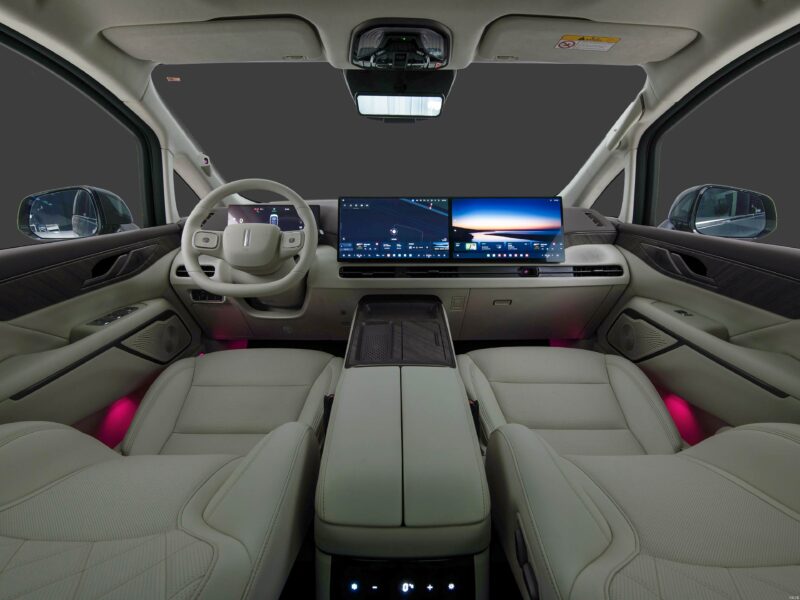
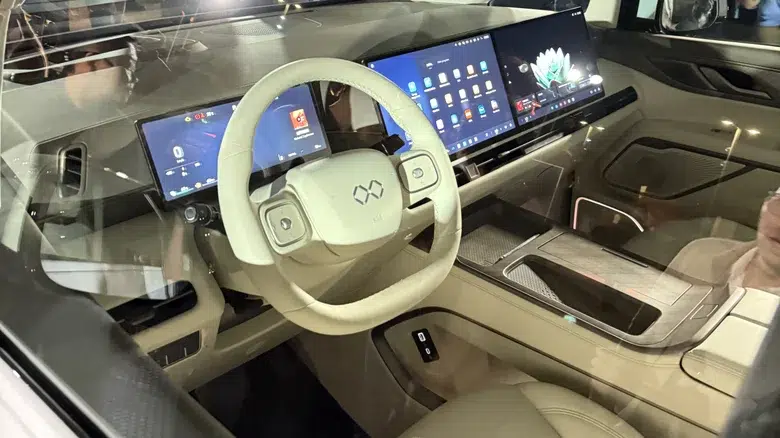
Faraday Future plans to ship the GWM’s minivan to the US as SKD (Semi-Knocked Down) kits, according to sources.
“They (Faraday Future) can’t ship the whole Gaoshan to the US because the EV tariffs would make the price unreasonable, so they agreed to do SKD. They will assemble the parts in their California facility and mount the large front screen, which they also source from a domestic (Chinese) supplier,” the source said.
A knock-down kit is a way of shipping vehicles in parts rather than as fully built cars. There are different levels of knock-down kits. One of the common ones is the SKD. In an SKD kit, the vehicle is only partially assembled at the factory. For example, the body and frame might already be welded and painted, but the engine, transmission, wheels, seats, and electronics are packed separately. These parts are then sent to another country, where the final assembly is done.
Knock-down kits are not a new concept in the automotive industry. For example, BYD use CKD (complete knock-down) kits in their newly opened EV plant in Brazil to build the BYD Seagull hatchback.
BYD says it will use local stamping, welding, painting, and peripheral components and push for further localisation of Seagull production in Brazil. For example, they have already entered into a partnership with Continental, which is expected to supply tires made in Brazil.
According to Electrek, the parts shipped from China for Faraday Future’s FX Super One will already be painted.
“Given the intense competition and domestic overcapacity, any vehicle we’re able to export is considered a good vehicle,” the source said, commenting on how cooperation is perceived at GWM.
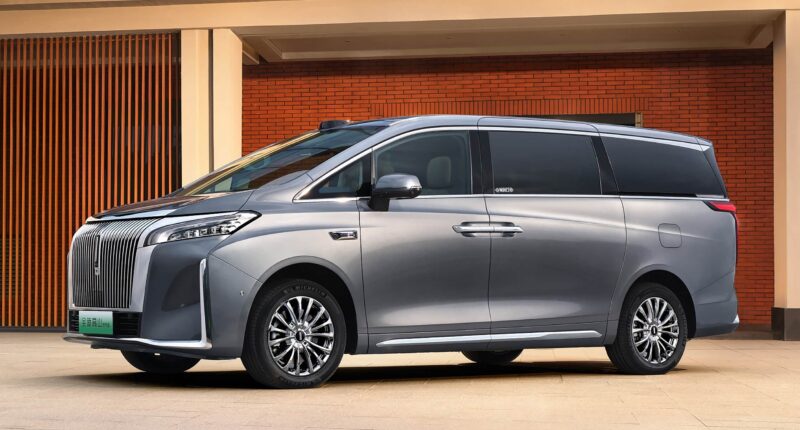
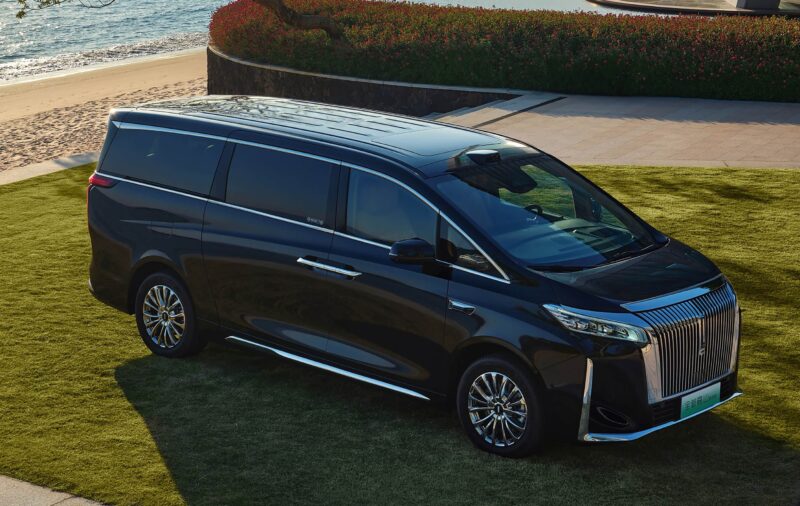
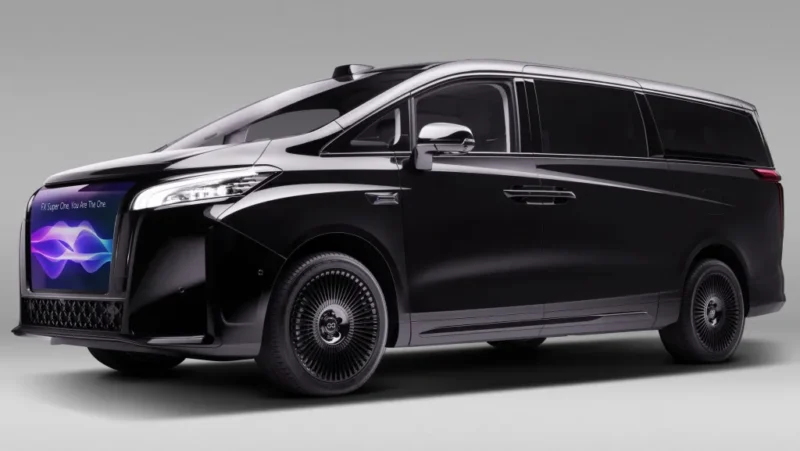
Editor’s comment
I’m pretty confused about the car’s specifications. Faraday Future claimed a wheelbase of 130 inches. But the Gaoshan 9 has a wheelbase of 128.9 inches. Changing the wheelbase is not an easy or inexpensive thing, and I don’t see a reason why FF would go through all these troubles of changing the wheelbase because of 1.1 inches (2.8 cm) of space. The other option is that FF is not precise in their spec sheet and rounded 128.9 inches to 130 inches, or they are trying to visually differentiate the FX Super One’s spec sheet from Gaoshan specs. Hopefully, we will learn more upon launch.
The other thing is the founder of Faraday Future, Jia Yueting. I was surprised that this individual is still being taken seriously in the US, as in China, his credibility is not high. Once, a successful businessman, even called “Chinese Elon Musk,” is now considered a joke and a popular subject for memes.
Yueting founded LeEco, a Chinese company often compared to Netflix, and achieved considerable success. Later, he began producing high-quality smartphones. I even used to have one. He co-founded Faraday Future in 2014, but in 2019, he filed for bankruptcy with personal debt exceeding 3.6 billion USD. He somehow settled his situation in the US, but in China, he still owes multiple creditors, and his property was frozen. His Chinese debt situation is reportedly still not solved.
As I watched the media event in Los Angeles, it became painfully obvious that nearly every second sentence contained AI: AI Agent 6×4 Architecture, Front AI Communication Ecosystem, EAI MPV, AIEV Market, AI hybrid extended range (AIHER), EAI Space System,… It seemed to me that if Faraday Future’s S1 minivan were to launch in 2000, it would be called a dot-com car, if it were to launch in 2015, it would be a blockchain car, however, in 2025, it must be an AI car.
The entire FX Super One (S1) minivan unveiling just doesn’t make much sense to me, especially as the company plans to “build” only 150 cars this year. With Jia Yueting’s ongoing financial troubles and Faraday Future still being a publicly listed company, all I can think of is trying to help the stock with some positive news. Hopefully, I’m wrong, and the US will get a fair enough and reasonably priced electric minivan.
CarNewsChina reached out to Great Wall Motor, but the company declined to comment. CarNewsChina reached out to Farada Future for comment, but the company didn’t respond as of press time.
